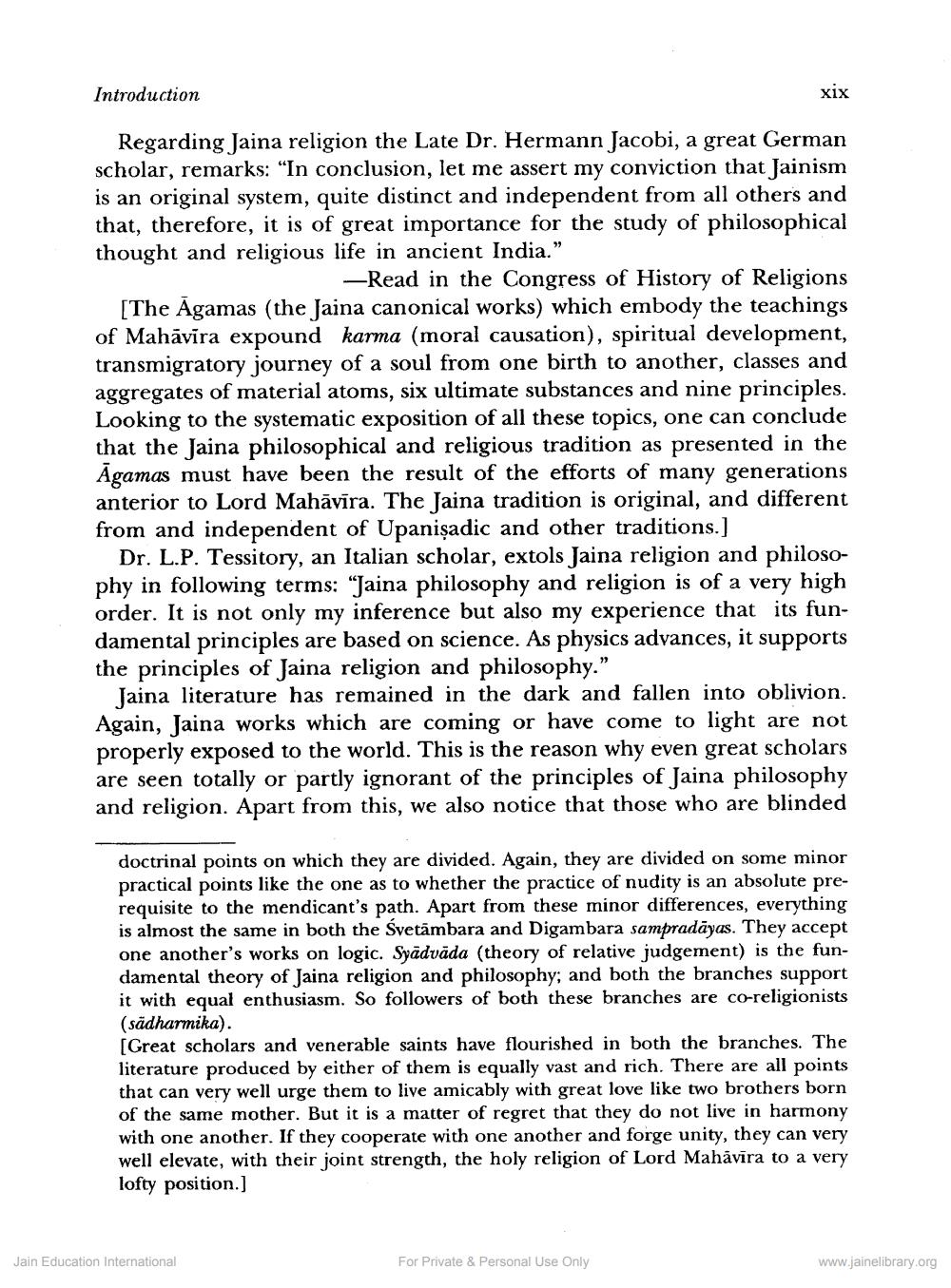________________
Introduction
xix
Regarding Jaina religion the Late Dr. Hermann Jacobi, a great German scholar, remarks: “In conclusion, let me assert my conviction that Jainism is an original system, quite distinct and independent from all others and that, therefore, it is of great importance for the study of philosophical thought and religious life in ancient India."
—Read in the Congress of History of Religions [The Agamas (the Jaina canonical works) which embody the teachings of Mahāvira expound karma (moral causation), spiritual development, transmigratory journey of a soul from one birth to another, classes and aggregates of material atoms, six ultimate substances and nine principles. Looking to the systematic exposition of all these topics, one can conclude that the Jaina philosophical and religious tradition as presented in the Agamas must have been the result of the efforts of many generations anterior to Lord Mahāvīra. The Jaina tradition is original, and different from and independent of Upanisadic and other traditions.) Dr. L.P. Tessitory, an Italian scholar, extols Jaina religion and philoso
2 following terms: "Jaina philosophy and religion is of a very high order. It is not only my inference but also my experience that its fundamental principles are based on science. As physics advances, it supports the principles of Jaina religion and philosophy."
Jaina literature has remained in the dark and fallen into oblivion. Again, Jaina works which are coming or have come to light are properly exposed to the world. This is the reason why even great scholars are seen totally or partly ignorant of the principles of Jaina philosophy and religion. Apart from this, we also notice that those who are blinded
doctrinal points on which they are divided. Again, they are divided on some minor practical points like the one as to whether the practice of nudity is an absolute prerequisite to the mendicant's path. Apart from these minor differences, everything is almost the same in both the Svetambara and Digambara sampradāyas. They accept one another's works on logic. Syāduāda (theory of relative judgement) is the fundamental theory of Jaina religion and philosophy; and both the branches support it with equal enthusiasm. So followers of both these branches are co-religionists (sädharmika). (Great scholars and venerable saints have flourished in both the branches. The literature produced by either of them is equally vast and rich. There are all points that can very well urge them to live amicably with great love like two brothers born of the same mother. But it is a matter of regret that they do not live in harmony with one another. If they cooperate with one another and forge unity, they can very well elevate, with their joint strength, the holy religion of Lord Mahāvīra to a very lofty position.)
Jain Education International
For Private & Personal Use Only
www.jainelibrary.org




